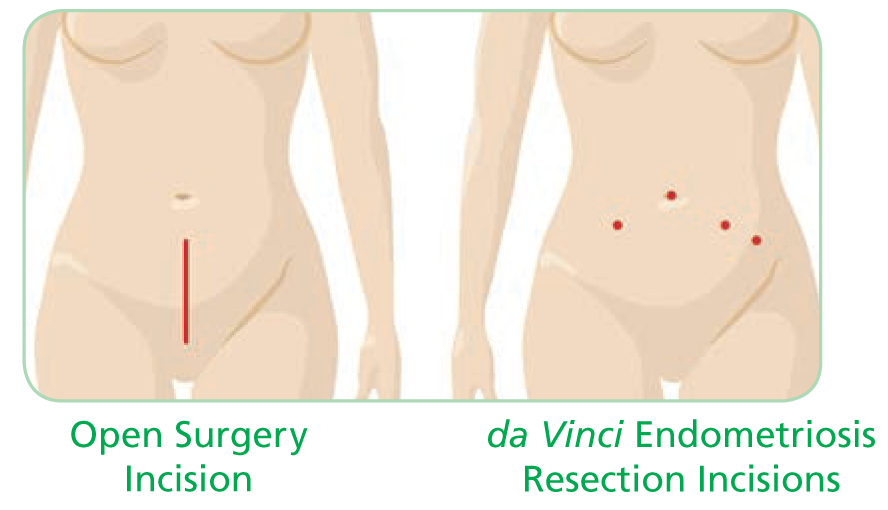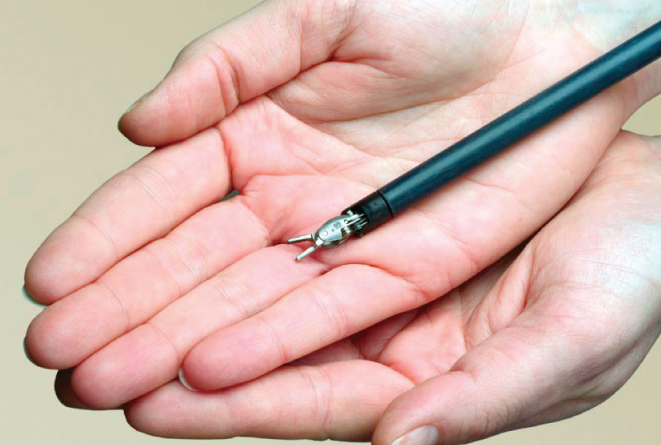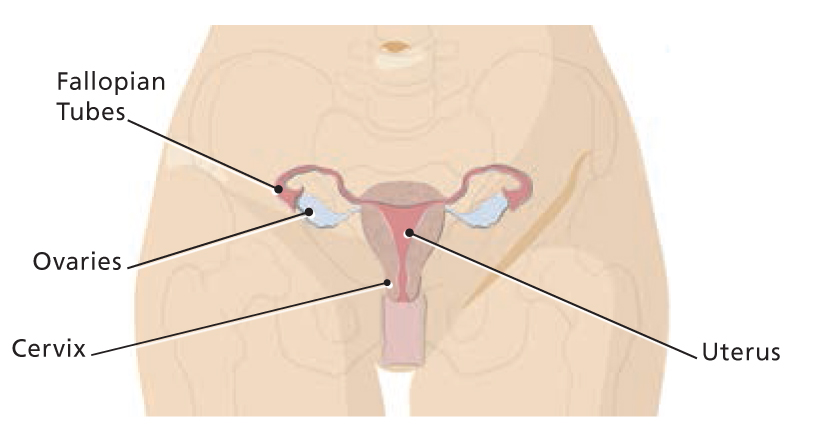The Condition
Endometriosis is a condition in which the tis- sue that lines the uterus – the endometrium also grows outside the uterus. This tissue, called implants or lesions, is found most often in the pelvic area, but in rare cases, develops in other parts of the body. Normally, the endometrium sheds each month during a woman’s period, but implants stay in place.
Endometriosis is usually diagnosed between ages 25 to 35 but can occur anytime during a woman’s reproductive years – menstruation through menopause. Endometriosis is very common, affecting five percent of the female population of reproductive age. Family history plays an important role; a woman who has a mother or sister with endometriosis is six times more likely to develop the condition.
Many women have no symptoms, but for others, endometrial implants can cause irregular bleeding, infertility and pain. Mild to severe pain is the most common symptom, which may include pain during periods, intercourse and bowel movements, and pain in the lower back or abdomen.
The Treatment: Endometriosis Resection
Depending on how severe the symptoms are, treatment options for endometriosis may include lifestyle changes, medication to control pain, medication to control endometriosis growth,
or surgery.
For women suffering from severe symptoms, there are two surgical options to treat endometriosis. Endometriosis resection involves removing all visible implants while leaving the uterus and
other organs in place. Endometriosis resection is usually recommended for women who want to get pregnant in the future. Hysterectomy involves removing the uterus and possibly other organs. It is often recommended for women who are not planning a future pregnancy.
Endometriosis resection and hysterectomy can be performed using traditional open surgery or minimally invasive surgery (laparoscopy).
Open surgery typically involves a long incision and lengthy recovery. Traditional laparoscopic surgery, performed through a few small incisions, has the benefit of being minimally invasive. However, it can present challenges during complex or delicate procedures due to the long-handled, rigid instruments used.
Fortunately, there is a minimally invasive treatment for endometriosis designed to overcome the limits of both open and traditional laparoscopic surgery.

da Vinci Endometriosis Resection
If your doctor recommends surgery to treat endometriosis and its symptoms, you may be a candidate for minimally invasive da Vinci Endometriosis Resection.
Using state-of-the-art technology, da Vinci Surgery requires just a few tiny incisions. The enhanced vision, precision, dexterity and control of the da Vinci System allows your surgeon to perform a more thorough removal of deeply penetrated or widespread endometrial implants. da Vinci offers patients many potential benefits over traditional laparoscopy, including:
• Low blood loss
• Low conversion rate to open surgery3 Low rate of complications
• Short hospital stay
• Minimal scarring
Every surgery is unique to each patient and procedure, therefore results cannot be guaranteed.
The Enabling Technology: da Vinci Surgical System
The da Vinci Surgical System is designed to provide surgeons with enhanced capabilities, including high- definition 3D vision and a magnified view. Your doctor controls the da Vinci System, which translates his or her hand movements into smaller, more precise movements of tiny instruments inside your body.
Though it is often called a “robot,” da Vinci cannot act on its own. Surgery is performed entirely by your doctor. Together, da Vinci technology allows your doctor to perform routine and complex procedures through just a few small openings, similar to traditional laparoscopy.
The da Vinci System has been used successfully worldwide in approximately 1.5 million various surgical procedures to date. da Vinci – changing the experience of surgery for people around the world.

Content provided by Intuitive Surgical.



